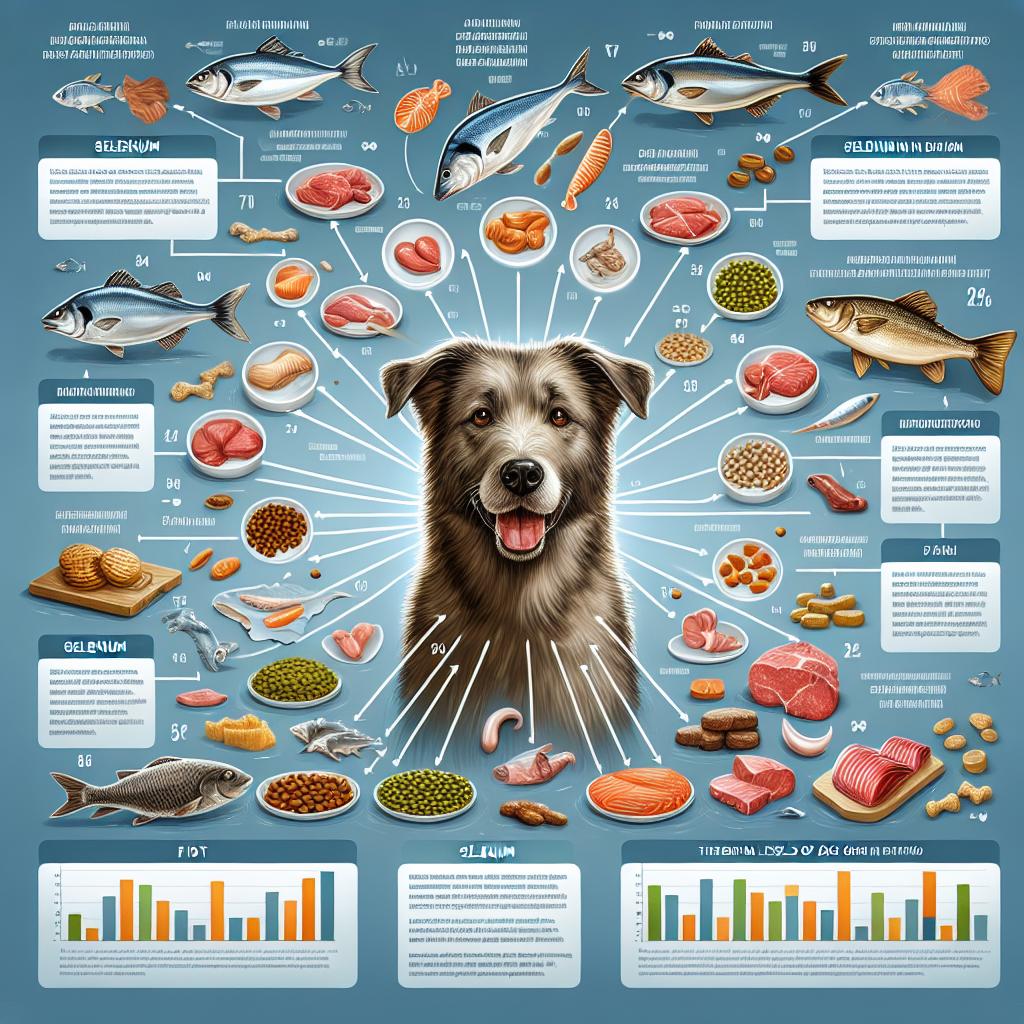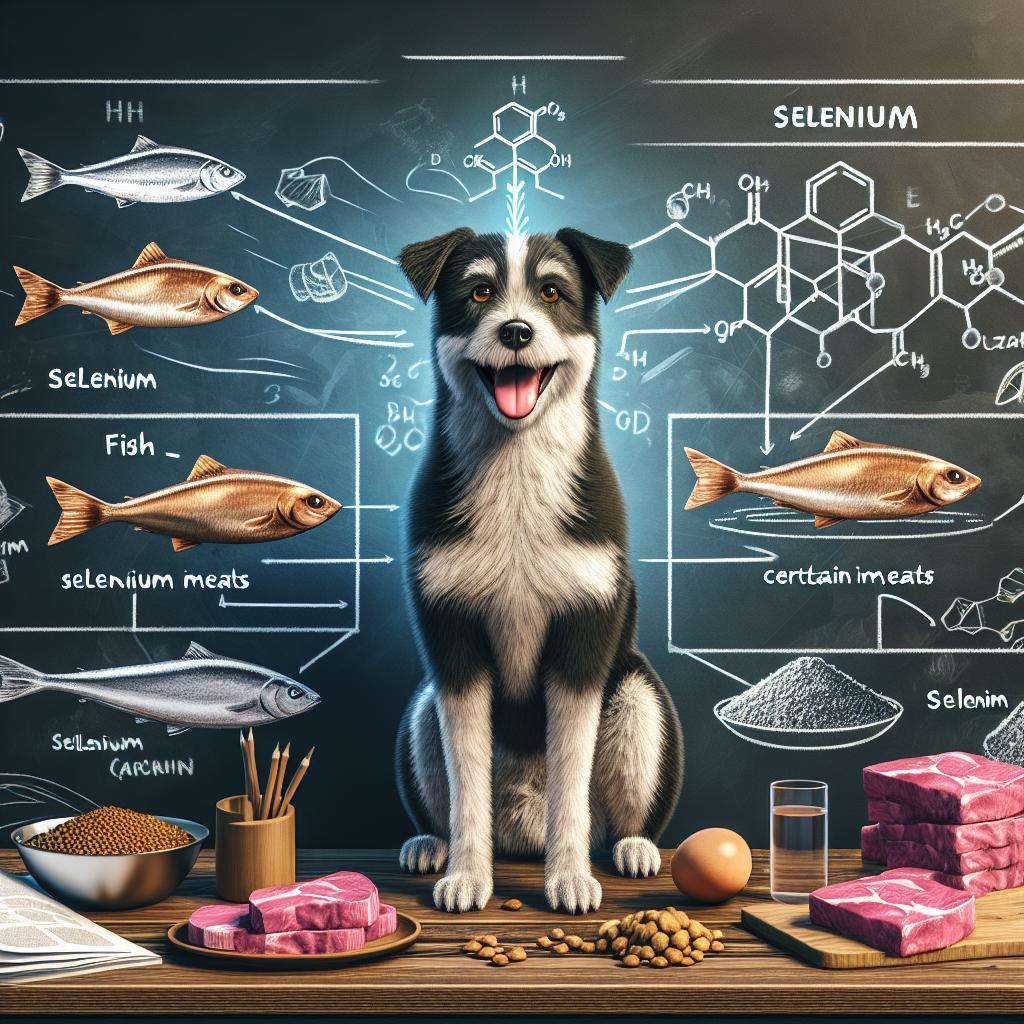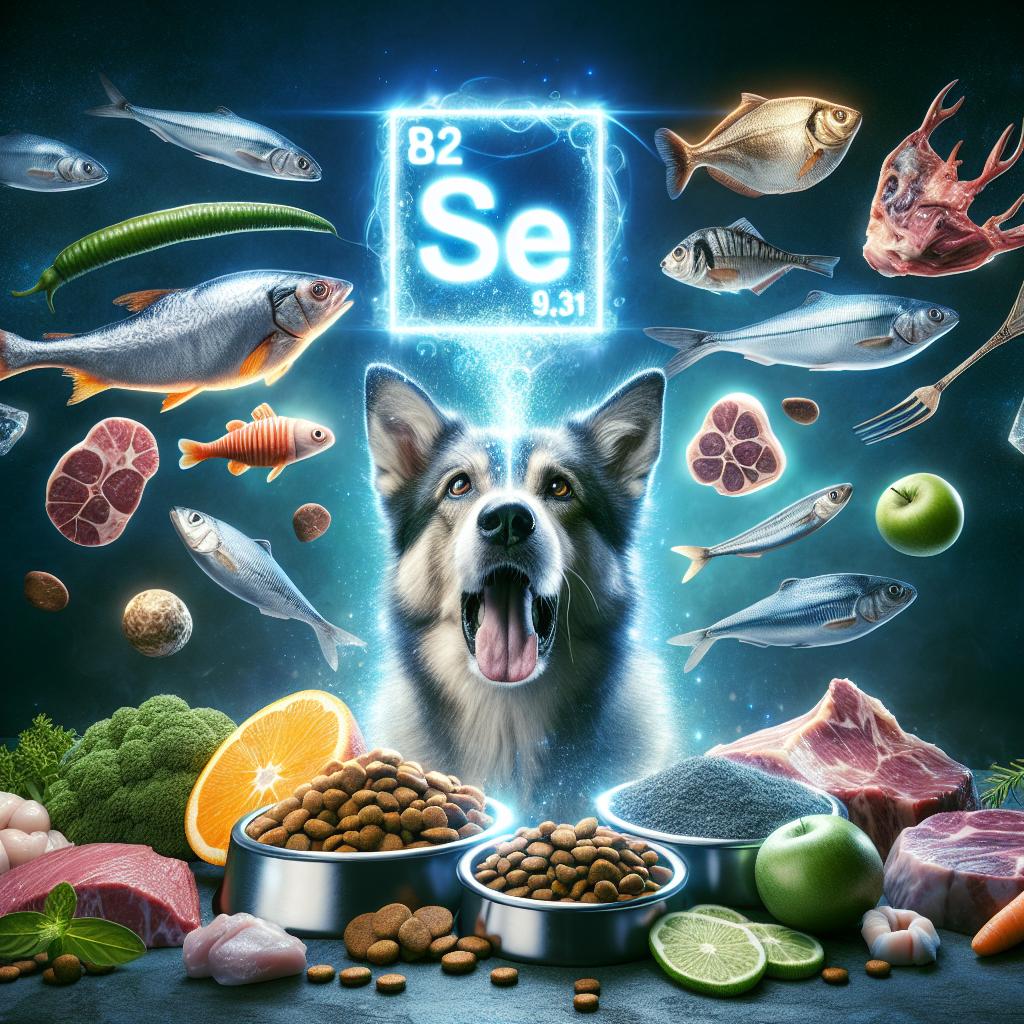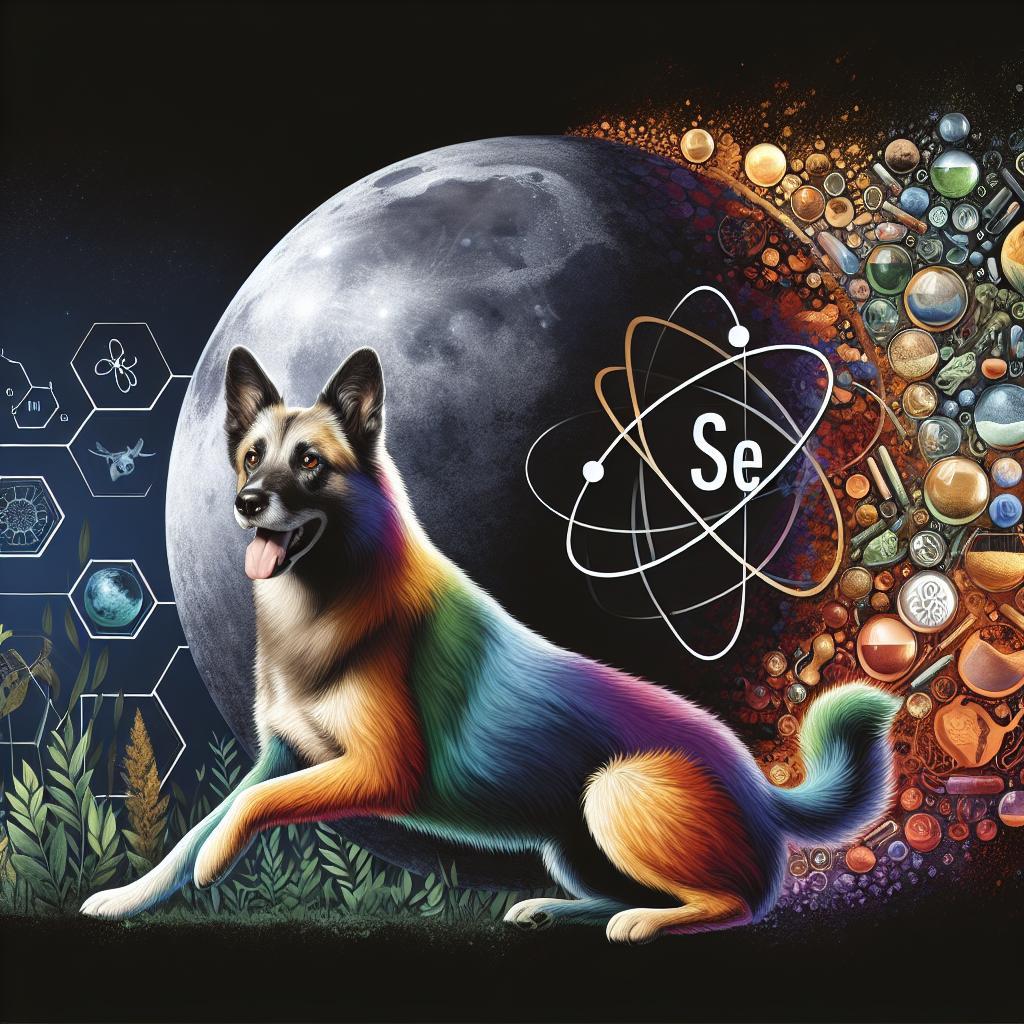The Role of Selenium in Dog Nutrition: An Essential Element for Canine Health
As pet owners, we often find ourselves navigating a maze of information about what our furry companions should consume for optimal health. Amidst the discussions of proteins, carbohydrates, and vitamins, one crucial nutrient often lingers in the shadows: selenium. This trace mineral, although required in minute amounts, plays a significant role in maintaining the vitality and well-being of our dogs. From supporting immune function to promoting heart health, selenium’s benefits are far-reaching yet frequently overlooked. In this article, we’ll uncover the vital contributions of selenium to dog nutrition, explore its sources, understand the importance of balance, and empower you with the knowledge to make informed choices for your canine’s diet. Join us as we shed light on this essential element and discover how it can help ensure a long, healthy life for your four-legged friend.
Understanding Seleniums Essential Role in Canine Health
Selenium, a trace mineral, serves as an essential antioxidant in canine health, protecting cells from damage caused by free radicals. Dogs rely on this nutrient to support their immune system, enhance reproductive health, and maintain optimal growth and development. A deficiency in selenium can lead to a range of health issues, including muscle weakness, cardiovascular problems, and compromised immunity. Ensuring an adequate intake of this vital mineral is crucial, especially for breeds that may have a higher susceptibility to selenium deficiencies.
Sources of selenium in dog diets can vary widely. Many commercial dog foods are formulated to contain appropriate levels of this mineral, but it can also be found in natural food sources, including:
- Organ meats – Rich in nutrients, providing a concentrated source of selenium.
- Fish – Particularly tuna and sardines, which are packed with omega-3 fatty acids and selenium.
- Nuts and seeds - Such as Brazil nuts, offering high selenium levels.
- Grains – Whole grains like brown rice and oats contain trace amounts of selenium.
Monitoring selenium intake becomes especially important in regions where soil selenium content is low, leading to undernourished forage and feed crops. Veterinarians often recommend supplements or specific dietary adjustments for dogs exhibiting signs of deficiency, ensuring they receive this critical mineral for maintaining overall well-being. A balanced approach to nutrition, incorporating both tailored commercial diets and whole food sources, can help keep your dog’s selenium levels in check.

Sources of Selenium for Your Dogs Balanced Diet
Finding the right sources of selenium is crucial for maintaining a dog’s balanced diet. This essential trace mineral can be incorporated into their meals through a variety of naturally occurring foods. Consider including the following options to enhance your dog’s selenium intake:
- Brazil nuts: An excellent source, just be sure to offer them in moderation due to their high fat content.
- Fish: Varieties like tuna and sardines not only provide selenium but also beneficial omega-3 fatty acids.
- Meat: Lean cuts of beef, chicken, and turkey are rich in selenium, making them perfect protein sources.
- Eggs: A versatile addition to your dog’s diet, eggs are packed with nutrients, including selenium.
- Bread and cereals: Whole grain options tend to offer more selenium compared to refined products.
For dog owners seeking commercially prepared food, many high-quality dog kibble brands ensure selenium levels are optimized. It’s crucial to read labels carefully to confirm the selenium content. Here’s a quick comparison of popular dog food sources:
| Dog Food Type | Selenium Content (mcg/kg) |
|---|---|
| Chicken-based Kibble | 0.2 |
| Beef-based Kibble | 0.3 |
| Fish-based Kibble | 0.4 |
| Homemade Mix with Eggs | 0.5 |

Recommended Selenium Intake Levels for Different Dog Breeds
Understanding the specific selenium needs for different dog breeds is crucial for promoting overall health and well-being. While the Nutritional Requirements of Dogs guide general intake levels, certain breeds may require adjustments based on their size, activity level, and health conditions. Below are some recommended selenium intake levels:
| Dog Breed | Recommended Daily Selenium Intake (mcg) |
|---|---|
| Small Breeds (e.g., Chihuahua, Pomeranian) | 30-50 |
| Medium Breeds (e.g., Beagle, Bulldog) | 50-70 |
| Large Breeds (e.g., Labrador, Golden Retriever) | 70-100 |
| Giant Breeds (e.g., Great Dane, Saint Bernard) | 100-150 |
It’s important to consult with a veterinarian to tailor selenium intake according to individual dietary needs. Factors such as age, metabolism, and specific health concerns can influence requirements. Additionally, while selenium is essential, excessive intake can be toxic, so balance is key. Here are some general recommendations for breeds with unique nutritional needs:
- Active Working Breeds: May benefit from higher selenium levels to support muscle function.
- Older Dogs: Often require adjustments to their selenium intake for enhanced antioxidant activity.
- Breeds Prone to Heart Issues: Extra selenium may help support cardiovascular health.

Signs of Selenium Deficiency and How to Address It
A lack of selenium in your dog’s diet can lead to several health issues that may be difficult to detect initially. Common signs of deficiency include:
- Fatigue and lethargy: Dogs may seem less energetic or show decreased interest in playtime.
- Weakened immune system: Increased susceptibility to infections and illnesses.
- Muscle strength and growth: Deficiencies can lead to muscle weakness or even myopathy, which is particularly concerning in growing puppies.
- Skin and coat issues: Poor coat condition or hair loss can indicate a nutritional imbalance.
To effectively address selenium deficiency, it is crucial to ensure your dog’s diet is balanced and includes adequate sources of this essential mineral. Here are some practical steps to take:
- Introduce selenium-rich foods: Options such as Brazil nuts, fish, and organ meats can help boost selenium levels.
- Consider supplements: Speak with your veterinarian about adding selenium supplements to your dog’s diet.
- Regular veterinary check-ups: Monitor your dog’s health through routine check-ups to catch any nutritional deficiencies early.
| Food Source | Selenium Content (mcg per serving) |
|---|---|
| Brazil Nuts | 544 |
| Fish (Tuna) | 63 |
| Organ Meats (Liver) | 40 |
Q&A
Q&A: The Role of Selenium in Dog Nutrition
Q1: What is selenium, and why is it important in a dog’s diet?
A1: Selenium is a trace mineral that plays a crucial role in many bodily functions, including antioxidant defense, thyroid hormone metabolism, and immune system support. While dogs require it in only small amounts, selenium is essential for maintaining overall health and preventing certain diseases.
Q2: How does selenium function as an antioxidant in dogs?
A2: Selenium works in tandem with vitamins like E to combat oxidative stress in the body. By neutralizing free radicals, selenium helps to protect cells from damage, which can play a part in reducing the risk of chronic diseases and supporting a dog’s longevity.
Q3: Can a dog get enough selenium from their regular diet?
A3: Most well-balanced commercial dog foods are formulated to meet the nutritional needs of dogs, including adequate levels of selenium. However, the selenium content can vary depending on the quality of the ingredients and the source of protein, so it’s important for dog owners to choose high-quality pet food.
Q4: What are some natural sources of selenium for dogs?
A4: Natural sources of selenium include Brazil nuts, seafood, organ meats, and certain grains. For dog owners looking to supplement their pet’s diet, food options such as fish (like tuna or salmon), chicken, and whole grains like brown rice can provide beneficial amounts of selenium.
Q5: What happens if a dog has too little selenium in their diet?
A5: A deficiency in selenium can lead to several health problems, including impaired immune function, muscle weakness, and reproductive issues. In severe cases, it can result in conditions like white muscle disease, where the muscles degenerate and become weak.
Q6: Can dogs have too much selenium?
A6: Yes, like many nutrients, excess selenium can be harmful and lead to toxicity. Symptoms of selenium toxicity may include gastrointestinal disturbances, hair loss, and neurological issues. It’s important to consult a veterinarian before adding any supplements to ensure safe and appropriate dosage.
Q7: How can dog owners ensure their pets get the right amount of selenium?
A7: Dog owners should focus on providing a balanced diet that satisfies their dog’s nutritional needs. Regularly consulting with a veterinarian can also help determine if dietary adjustments or supplements are necessary based on the dog’s individual health status and lifestyle.
Q8: Are there specific breeds that may require different selenium levels?
A8: Generally, all dogs have similar selenium requirements; however, some breeds may be more prone to certain health issues. Therefore, breeders and owners of certain breeds should consult with a veterinarian to optimize their agricultural approach to nutrition, including selenium intake.
Q9: What is the takeaway message about selenium in dog nutrition?
A9: Selenium is a vital nutrient that contributes to a dog’s overall health, particularly in boosting the immune system and protecting against oxidative stress. By providing a balanced diet rich in quality ingredients, dog owners can help ensure their furry friends receive the selenium they need for a happy and healthy life.
Key Takeaways
selenium may not be the most commonly discussed nutrient in the realm of dog nutrition, but its significance is undeniably profound. As we’ve explored, this trace mineral plays a vital role in supporting your canine companion’s immune system, promoting healthy skin and coat, and even safeguarding against certain ailments. Ensuring your dog receives an adequate amount of selenium—whether through a balanced diet rich in whole foods or appropriate supplements—can contribute to their overall well-being and longevity. As responsible pet owners, it is our duty to be informed advocates for our furry friends, recognizing that each nutrient plays a unique part in the symphony of their health. By understanding the importance of selenium, you can make more informed choices that enhance your dog’s quality of life, one meal at a time. Here’s to many happy and healthy tails wagging for years to come!

